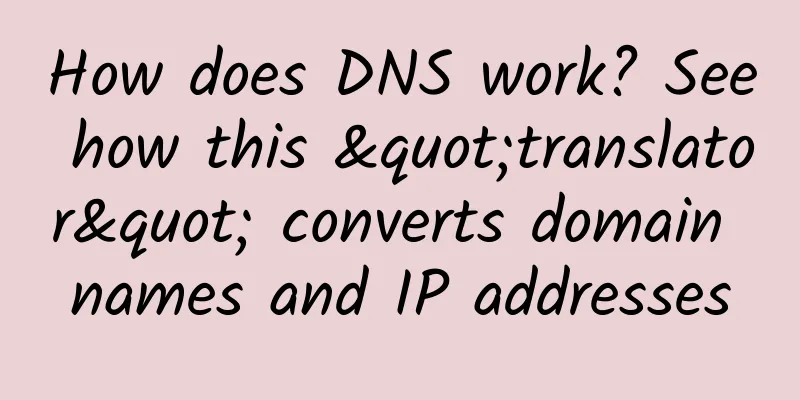What does 5G high and low frequency networking mean?

|
This article is reprinted from the WeChat public account "Xianzao Classroom", which can be followed through the following QR code. To reprint this article, please contact the Xianzao Classroom public account. Currently, the construction of 5G networks around the world is in full swing. According to statistics, as of August 2020, there are 92 5G commercial networks in the world, covering 38 countries and regions. These 5G networks basically adopt the TDD standard. I believe everyone knows that 4G LTE networks are divided into two types: FDD LTE and TDD LTE. The so-called FDD and TDD refer to frequency division duplex and time division duplex respectively. FDD frequency division duplex uses two different frequency bands, one for the uplink from mobile phone to base station, and the other for the downlink from base station to mobile phone. TDD time division duplexing uses the same frequency band for uplink and downlink transmission, and distinguishes them by the different transmission time nodes. Obviously, compared with FDD's exclusive "lane" approach, TDD has to consider uplink and downlink time slot allocation and interference suppression, and its technical implementation is more complicated. However, the spectrum resource utilization of FDD is not as good as that of TDD. Mobile communication services have the characteristic of unbalanced uplink and downlink data traffic. For example, when watching a video, the downlink data volume is large, but the uplink data volume is small. If FDD is used, resource allocation is not flexible, and the frequency band occupied by the uplink is basically idle. TDD supports flexible allocation of uplink and downlink time slots. In scenarios with heavy downlink traffic, more downlink time slots are allocated, and vice versa. In the 4G era, the number of FDD LTE networks worldwide is greater than that of TDD LTE. In the 5G era, things have changed. 5G needs a larger frequency bandwidth to achieve high speeds. In the high frequency band, it is too difficult to find two symmetrical large frequency bandwidth band resources like FDD. The low frequency resource utilization rate of FDD is completely unbearable. Moreover, for the massive MIMO technology adopted by 5G, TDD has better signal reciprocity and is easier to design. Therefore, considering various factors, major operators have turned to TDD when deploying their own 5G networks. This really proves the old saying: "Thirty years in the east, thirty years in the west". What is high and low frequency networking? Does this mean the story ends here? Of course not. 5G uses TDD high frequency, which means it has to face a more difficult problem - insufficient network coverage. The network coverage is insufficient, mainly due to insufficient uplink capacity. For downlink, from base station to mobile phone, there will generally be no problems because the base station has a higher transmission power and is supported by technologies such as beamforming. On the uplink, from the mobile phone to the base station, the mobile phone's antenna power is very low and its voice is low, so naturally the signal propagation distance is short, which limits the communication distance between the mobile phone and the base station (that is, limits the coverage range of the base station). 5G now uses higher frequency bands than 4G, such as 3.5GHz and 4.9GHz, which have greater penetration loss and faster signal attenuation. The use of TDD has a more obvious impact on coverage capabilities. So, how to solve this problem? Experts came up with the idea of uplink and downlink decoupling, SUL (Supplementary Uplink) technology. The idea behind this technology is very simple. Isn't the high frequency uplink insufficient? Then we can "borrow" some frequency band resources from the medium and low frequencies as the uplink channel! The penetration loss of medium and low frequencies is smaller and the propagation distance is longer, which can effectively help 5G improve its coverage. Although the bandwidth of medium and low frequencies is smaller and cannot meet the needs of Gbps high-bandwidth services, it can cope with most scenarios including mobile phone communications. Thinking further, which mid- and low-frequency band resources are suitable for "borrowing"? Taking 2.1GHz as an example, China Unicom and China Telecom currently have 25MHz and 20MHz spectrum resources in this frequency band respectively. These resources are temporarily occupied by 4G LTE networks, but they are the first choice for frequency band re-cultivation. Telecom and Unicom 2.1GHz frequency range We cannot adopt a one-size-fits-all approach and directly use these resources for 5G NR, otherwise it will affect the current 4G network user experience. However, we can use dynamic spectrum sharing (DSS) technology to allow 4G/5G networks to share this spectrum resource. In this way, we have formed a networking mode of "medium and low frequency FDD NR + high frequency TDD NR", which can be called "high and low frequency networking". Traditional SUL assisted uplink uses 3.5GHz for uplink and downlink at medium and short distances. When the distance becomes longer and the 3.5GHz uplink is "out of reach", SUL is activated and 2.1GHz replaces 3.5GHz to be responsible for uplink. Traditional SUL assisted uplink This means, then, that most of the time (at medium and close distances), the auxiliary uplink is idle. Therefore, Huawei proposed "super uplink", that is, at medium and short distances, auxiliary uplink resources are also used to cooperate with the TDD main carrier to transmit uplink data in turn to enhance uplink capabilities. Super Uplink This is undoubtedly a very practical idea, breaking the limitation that carrier aggregation must "bundle" spectrum. In addition, Huawei has also innovatively launched the FDD 5G broadcast channel narrow beam technology and the TDD 5G broadcast channel intelligent optimization technology. FDD 5G broadcast channel narrow beam technology is different from the traditional single broadcast wide beam. Instead, it uses two broadcast narrow beams in rotation, which can increase coverage by 3dB and improve the depth and breadth of VoNR service coverage. Broadcast channel narrow beam technology The intelligent optimization of the TDD system broadcast channel mainly involves beamforming and polling the broadcast channel, and uses AI to intelligently identify coverage scenarios and user distribution, providing multiple beam combinations for intelligent matching to achieve the best user experience and spectrum efficiency. Intelligent optimization technology for broadcast channels Standardization and terminal support Whether the networking mode of "medium and low frequency FDD NR + high frequency TDD NR" can be implemented depends on whether the standards allow it and whether the terminals support it. Although TDD NR has always been the preferred option for operators and equipment manufacturers, FDD NR has not been forgotten by standard setters. On July 3, 2020, the 3GPP R16 version standard was frozen. This version has made comprehensive enhancements to 5G 2C and 2B scenarios, including FDD NR enhancements. At present, the standardization work of NR/DSS FDD large bandwidth has been completed, including 2.1GHz NR FDD and 700MHz NR FDD. In addition, FDD large-bandwidth downlink carrier aggregation (CA) and assisted uplink (SUL) have been approved and are being actively promoted. In terms of terminals, mainstream chips including Huawei and Qualcomm currently fully support 3.5G/2.6G/2.1G/1.8G NR, and some support 700MHz NR. By 2021, 5G chips will also support large-bandwidth FDD NR and large-bandwidth SUL. The role of high and low frequency networking In the future, the most reasonable way to deploy 5G networks for different demand scenarios such as urban areas and suburban counties is to achieve large bandwidth through TDD NR and supplementary coverage and uplink enhancement through FDD NR. In addition to making up for the uplink shortcomings of TDD NR and enhancing coverage in rural areas, 5G FDD NR also has the function of enhancing deep coverage in urban areas. Urban macro base stations use a combination of high and low frequencies to improve outdoor coverage. Stronger penetration can help cover indoor areas and save investment in 5G indoor distributed systems. It can even be said that through collaborative operation and maintenance, energy conservation goals can be achieved by putting part of the network into hibernation at night or during periods of light load, while ensuring the stability of network KPIs. In summary, high and low frequency networking fully combines the advantages of TDD's large bandwidth and FDD's long coverage, and is a very "down-to-earth" 5G networking strategy. Well, the above is about 5G high and low frequency networking. |
Recommend
6 tips to avoid automation disasters
Senior software engineer Benjamin Willenbring was...
Don’t listen to the merchants’ lies: WiFi signals can’t actually penetrate walls
With the continuous iteration of WiFi technology,...
5G is in the ascendant, and 6G is coming. Learn about the latest developments and trends
The latest research shows that 5G networks are fa...
ColoCrossing 25% off: $2.96/month - 1GB/25G SSD/20TB@1Gbps/Los Angeles & New York data centers
Last month, the blog shared information about Col...
5G, why not completely jointly build and share wireless access networks?
The key to 5G is to provide diversified services ...
Linux will support new network technology based on Li-Fi
According to phoronix, Li-Fi technology supplier ...
Wi-Fi vs. Ethernet: Which should you use and why?
Not long ago, you had to choose between a wired o...
TCP retransmission problem troubleshooting ideas and practices
1. About TCP retransmission TCP retransmission is...
Experience sharing: key points, difficulties and treatment measures of integrated wiring construction
For the wiring system, the difficulty of construc...
What are the five skills required for data center management?
Today, IT managers must be prepared for the vario...
GSMA: 5G networks will cover two-fifths of the world's population by 2025
According to foreign media reports, the "Mob...
As 2G network is being phased out, how should the three operators do so in a way that would be reasonable for “users”?
Since the news that Apple 13 completely abandoned...
The impact of hybrid IT environments on NetOps professionals
Hybrid work models are driving a major shift in n...
Different price 5G packages, different network speeds! It turns out that 5G also has different levels?
Using the same 5G network, some users can watch h...
Essential for operation and maintenance: 20 common service ports and their corresponding service information
In the operation and maintenance process, it is c...









